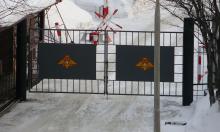The apostle Matheus grave and the Changez Khan treasures to be searched on the bottom of Issyk Kul Lake
The main group of researchers and camera men of the US TV corporation IPV News USA has come to the city of Bishkek. It is planning to carry out two fascinating expedition in Kirghizia. One of them is connected with searches for the Changez Khan treasures on the Issyk Kul Lake bottom, while the other – with shooting a great TV show on Enilchek glacier.
Though, the most interesting thing is, certainly, the underwater expedition. It intends to search not only for mythical treasures of the “conqueror of universe.” The extreme underwater researchers hope for a series of sensation finds. In particular, they suppose that namely on the bottom of the lake, relicts of Christian saint Matheus lie. According to some ancient legend, he was buried in an Orthodox monastery at Issyk Kul shore, which later turned out to be under water as a result of some natural cataclysms.
In general, according to the archaeologists, on the bottom of Issyk Kul, several ancient cities are buried. For example, famous Russian scientist and traveller Semenov-Tyan-Shansky believed that here, some “Kirghiz Atlantis” is buried. Apropos, that was he who already in 1857 reported to the world about this unique phenomenon. At that time, local citizens showed him some ruins in water, at Kara-Bulun cape, near to divide of Tyup and Jergalan rivers.
Later, ancient buildings were found in other parts of the lake. Today's Kirghiz archaeologists know about ten places on the lake where ancient settlements lie. One of them, according to the scientists, was the city of Chigu, the capital of the powerful state of the Usun, the nation which once possessed the whole Issyk Kul hollow. This residence was called by the Chinese “The City of Red Valley.”
Today’s archaeologists suppose that the city of Chigu lies in Tyup gulf. That were this city’s ruins which attracted once Semenov-Tyuan-Shansky. Chigu was surrounded with a powerful fortress wall. Though, this wall could not protect the city from cataclysms. The city of the Red Valley is assumed to have vanished in water in first centuries A. D.
The grave of St Matheus lies, according to the scientists, in another part of the lake: at the north-west shore, near to the settlement of Toru-Aigyr, where the modern tourist centre Ulan is situated. Tourists often found there pieces of ceramics and other ancient things. Already 50 years ago, a Kirghiz archaeologists dug here ruins of a medieval bath complex. The Kirghis researches suppose that the searches should be started namely here.
Arab chronicles report much about settlements at Issyk Kul. Middle-Eastern travellers remember about south shore of the lake. According to them, the cities of the “mountain pearl” were rich and populous. Already in 8th century B. C., there was a net of big and small cities with the central city of Barskhan. This city was mentioned in treatise of Middle-Asian thinker Beruni. He wrote that Barshkhan citizens had unriddled the mystery of a metal alloy known before only in China. So, boilers made in Barskhan were popular in the whole region. Though, by 16th century, the tracks of the cities are lost. According to the scientists, they were swallowed up by the lake after some powerful earthquake. For, Issyk Kul Lake lies in zone of high seismological activity. Old residents remember several natural cataclysms which took place in this area. They saw with their own eyes big parts of land going under water. Though, there is one more version. According to it, the cities got under water because the level of the lake rose. Some scientists suppose that the lake “pulses”: sometimes water floods shores, sometimes it steps back. Once, the level of the lake was approximately 6-8 or even 10 metres lower, than today.
Issyk Kul draws attention of many scientists. Recently, Russian researchers introduced a fantastic theory that on the bottom of the Kirghiz lake the legendary city of Kitezh could lie, which sank in a lake when encircled by enemies.
And now, the “mountain pearl” became famous in the United States, too. Besides Sergei Melnikov from IPV News USA corporation, teleoperators of the well-known Discovery channel intend to come to Issyk Kul. While local tourist firms have already created a route to the supposed grave of the apostle.
It is not obvious that the Matheus grave really will be found there, probably this will remain a legend. Though tourists and businessmen seem to be interested in all these expeditions. Which encourages.
Yury Razgulaev PRAVDA.Ru Bishkek Kirghizia
Translated by Vera Solovieva
Read the original in Russian: http://www.pravda.ru/main/2002/07/22/44474.html
Subscribe to Pravda.Ru Telegram channel, Facebook, RSS!




